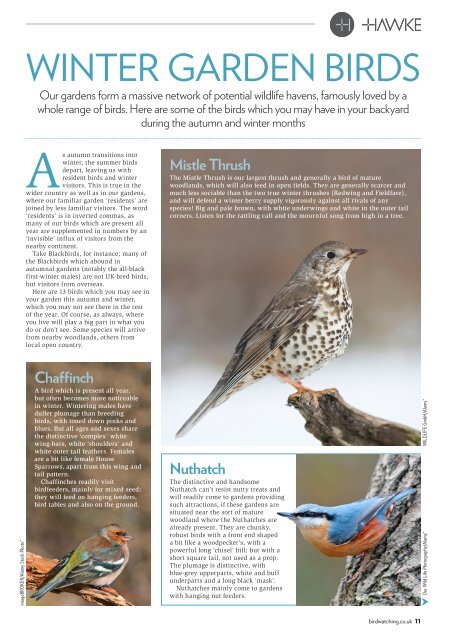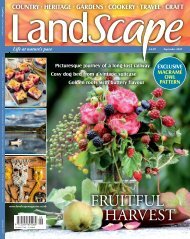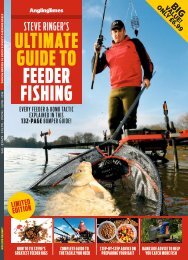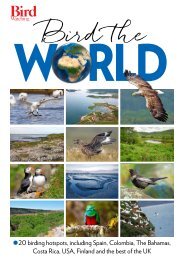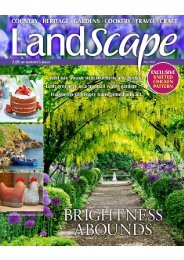You also want an ePaper? Increase the reach of your titles
YUMPU automatically turns print PDFs into web optimized ePapers that Google loves.
WINTER GARDEN BIRDS<br />
Our gardens form a massive network of potential wildlife havens, famously loved by a<br />
whole range of birds. Here are some of the birds which you may have in your backyard<br />
during the autumn and winter months<br />
As autumn transitions into<br />
winter, the summer birds<br />
depart, leaving us with<br />
resident birds and winter<br />
visitors. This is true in the<br />
wider country as well as in our gardens,<br />
where our familiar garden ‘residents’ are<br />
joined by less familiar visitors. The word<br />
‘residents’ is in inverted commas, as<br />
many of our birds which are present all<br />
year are supplemented in numbers by an<br />
‘invisible’ influx of visitors from the<br />
nearby continent.<br />
Take Blackbirds, for instance; many of<br />
the Blackbirds which abound in<br />
autumnal gardens (notably the all-black<br />
first-winter males) are not UK-bred birds,<br />
but visitors from overseas.<br />
Here are 13 birds which you may see in<br />
your garden this autumn and winter,<br />
which you may not see there in the rest<br />
of the year. Of course, as always, where<br />
you live will play a big part in what you<br />
do or don’t see. Some species will arrive<br />
from nearby woodlands, others from<br />
local open country.<br />
Mistle Thrush<br />
The Mistle Thrush is our largest thrush and generally a bird of mature<br />
woodlands, which will also feed in open fields. They are generally scarcer and<br />
much less sociable than the two true winter thrushes (Redwing and Fieldfare),<br />
and will defend a winter berry supply vigorously against all rivals of any<br />
species! Big and pale brown, with white underwings and white in the outer tail<br />
corners. Listen for the rattling call and the mournful song from high in a tree.<br />
imageBROKER/Alamy Stock Photo*<br />
Chaffinch<br />
A bird which is present all year,<br />
but often becomes more noticeable<br />
in winter. Wintering males have<br />
duller plumage than breeding<br />
birds, with toned down pinks and<br />
blues. But all ages and sexes share<br />
the distinctive ‘complex’ white<br />
wing-bars, white ‘shoulders’ and<br />
white outer tail feathers. Females<br />
are a bit like female House<br />
Sparrows, apart from this wing and<br />
tail pattern.<br />
Chaffinches readily visit<br />
birdfeeders, mainly for mixed seed;<br />
they will feed on hanging feeders,<br />
bird tables and also on the ground.<br />
Nuthatch<br />
The distinctive and handsome<br />
Nuthatch can’t resist nutty treats and<br />
will readily come to gardens providing<br />
such attractions, if these gardens are<br />
situated near the sort of mature<br />
woodland where the Nuthatches are<br />
already present. They are chunky,<br />
robust birds with a front end shaped<br />
a bit like a woodpecker's, with a<br />
powerful long ‘chisel’ bill; but with a<br />
short square tail, not used as a prop.<br />
The plumage is distinctive, with<br />
blue-grey upperparts, white and buff<br />
underparts and a long black ‘mask’.<br />
Nuthatches mainly come to gardens<br />
with hanging nut feeders.<br />
WILDLIFE GmbH/Alamy*<br />
Our Wild Life Photography/Alamy*<br />
birdwatching.co.uk 11


